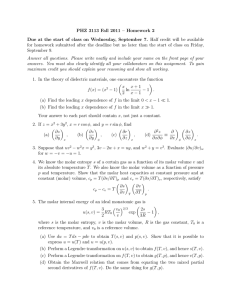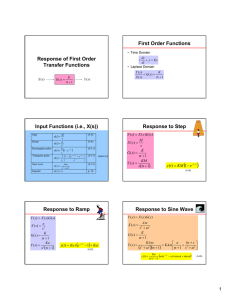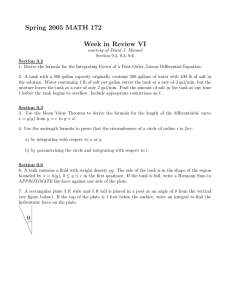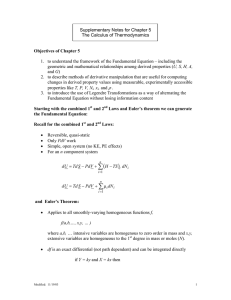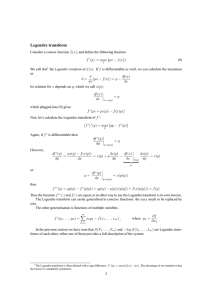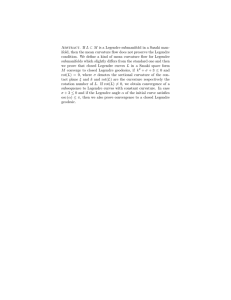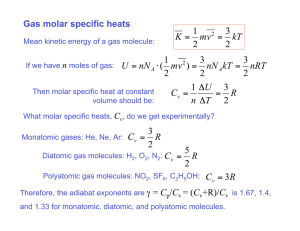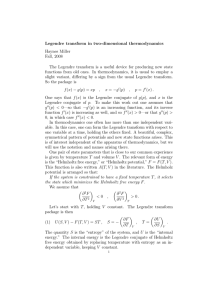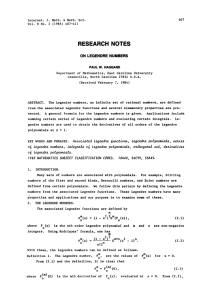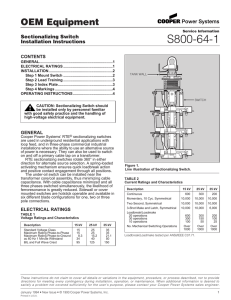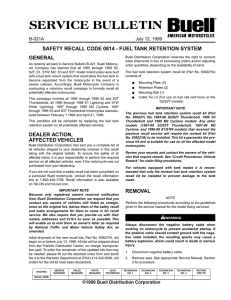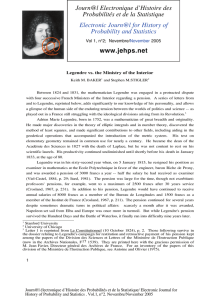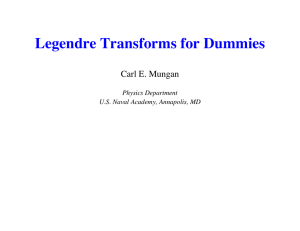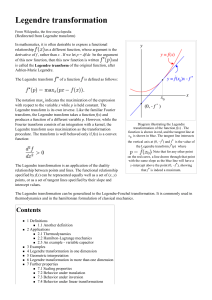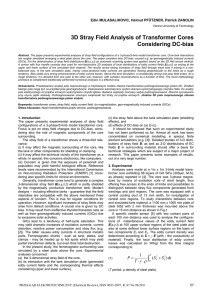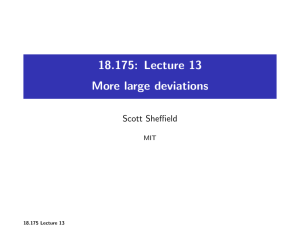PHZ 3113, Section 3924, Fall 2013, Homework 3
advertisement
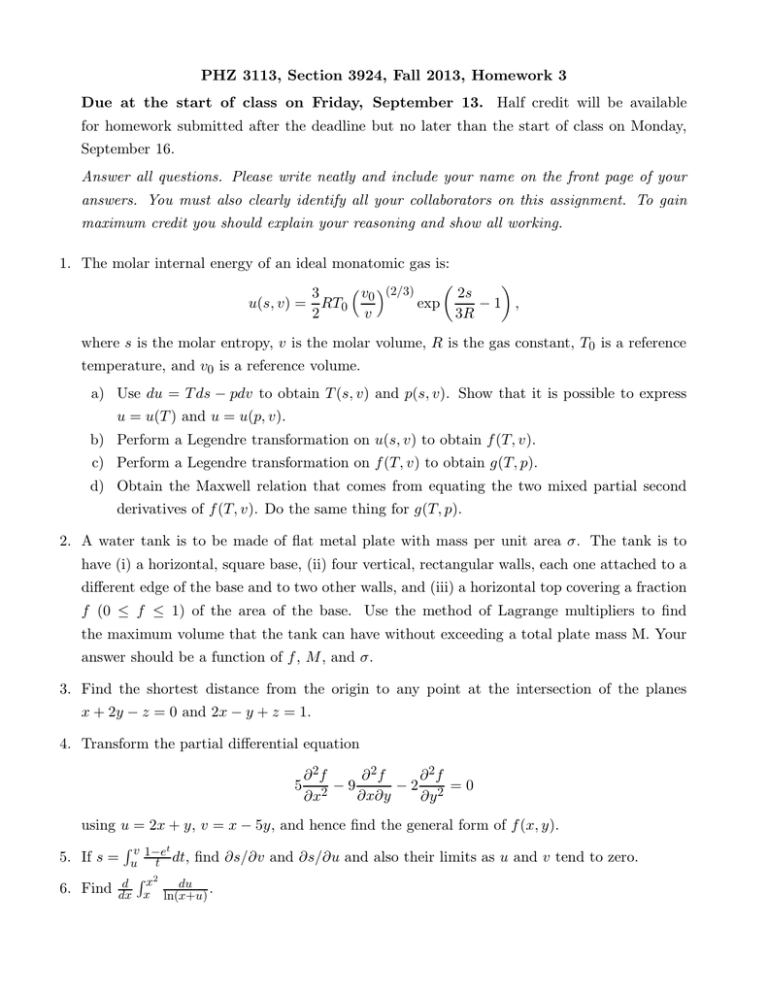
PHZ 3113, Section 3924, Fall 2013, Homework 3 Due at the start of class on Friday, September 13. Half credit will be available for homework submitted after the deadline but no later than the start of class on Monday, September 16. Answer all questions. Please write neatly and include your name on the front page of your answers. You must also clearly identify all your collaborators on this assignment. To gain maximum credit you should explain your reasoning and show all working. 1. The molar internal energy of an ideal monatomic gas is: v (2/3) 3 2s 0 u(s, v) = RT0 exp −1 , 2 v 3R where s is the molar entropy, v is the molar volume, R is the gas constant, T0 is a reference temperature, and v0 is a reference volume. a) Use du = T ds − pdv to obtain T (s, v) and p(s, v). Show that it is possible to express u = u(T ) and u = u(p, v). b) Perform a Legendre transformation on u(s, v) to obtain f (T, v). c) Perform a Legendre transformation on f (T, v) to obtain g(T, p). d) Obtain the Maxwell relation that comes from equating the two mixed partial second derivatives of f (T, v). Do the same thing for g(T, p). 2. A water tank is to be made of flat metal plate with mass per unit area σ. The tank is to have (i) a horizontal, square base, (ii) four vertical, rectangular walls, each one attached to a different edge of the base and to two other walls, and (iii) a horizontal top covering a fraction f (0 ≤ f ≤ 1) of the area of the base. Use the method of Lagrange multipliers to find the maximum volume that the tank can have without exceeding a total plate mass M. Your answer should be a function of f , M , and σ. 3. Find the shortest distance from the origin to any point at the intersection of the planes x + 2y − z = 0 and 2x − y + z = 1. 4. Transform the partial differential equation 5 ∂ 2f ∂ 2f ∂ 2f − 9 =0 − 2 ∂x∂y ∂x2 ∂y 2 using u = 2x + y, v = x − 5y, and hence find the general form of f (x, y). R t 5. If s = uv 1−e t dt, find ∂s/∂v and ∂s/∂u and also their limits as u and v tend to zero. d R x2 du 6. Find dx x ln(x+u) .
